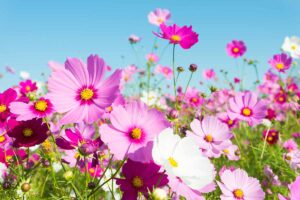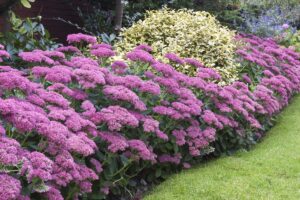Eutrochium maculatum
Denizen of roadside ditches, marshy edges, and wet pond shores, spotted joe-pye weed is the stand-out inhabitant of some often overlooked locations.
This tall member of the sunflower family, Asteraceae, can grow to heights of seven to eight feet and produces voluminous clusters of pink flowers as big as your head.

We link to vendors to help you find relevant products. If you buy from one of our links, we may earn a commission.
Come August, when spotted joe-pye weed starts to bloom, this perennial attracts a whirl of pollinators, from tiny wasps and spotted beetles to bees of every stripe and size.
Native across almost all of Canada and the United States save the northernmost and southernmost regions, spotted joe-pye is adapted to a wide range of climate conditions.
In fact, this hardy native thrives in a variety of habitats and an array of soil types too, from wet to freely draining, and rich and loamy to tough and full of clay.
This adaptable perennial is the perfect plant for wildlife gardens. The flowers of spotted joe-pye weed are excellent nectar sources for pollinators and the seed heads are good food for birds.
With its staggered whorls of leaves ascending tall, mottled (hence the name, “maculatum,” which means “spotted”) stems, spotted joe-pye weed adds dramatic effect to the back of any garden bed. Fortunately, shorter varieties exist too if you’re, um, short on space.
Read on to find out more about growing this giant among wildflowers.
What You’ll Learn
What Is Spotted Joe-Pye Weed?
A member of one of the largest flowering plant families on earth, the Asteraceae, spotted joe-pye weed belongs to a well-known genus recently renamed Eutrochium.
Many of the five species in this genus are used in horticulture and well-loved for their unfussiness and reliability.
The close relatives the joe-pyes left behind in their original genus, Eupatorium, are commonly known as the thoroughworts or bonesets.

Although all five are commonly called joe-pye weeds, each species occupies a slightly different ecological niche than the other, spanning a range of natural habitats from former meadows and swamps to dappled forest edges.
The common name is thought to come from a native American man of the same name who cured a plague of typhoid fever with a brew made from this plant.
Spotted joe-pye weed is one of the most grandiose amongst its close kin, boasting large flower heads that are actually aggregations of hundreds of tiny flowers, and lofty, long stems.
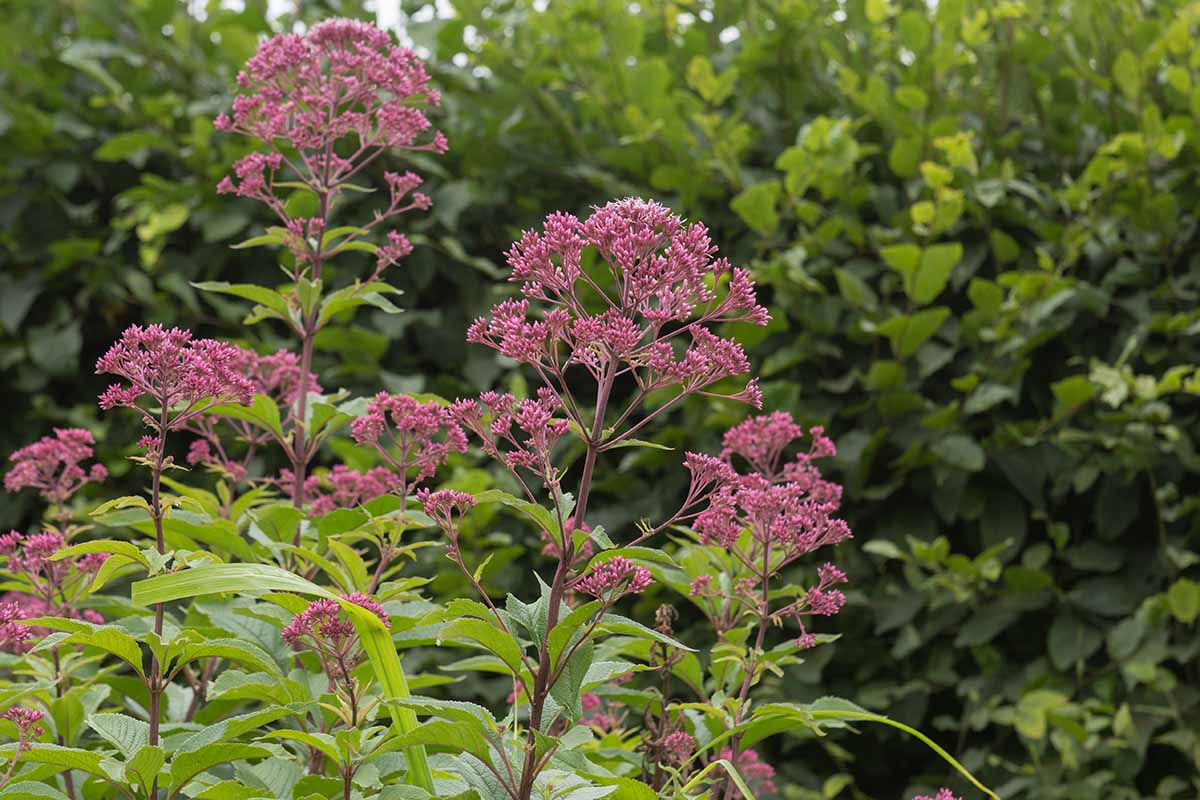
Each species features a characteristic whorl of leaves – the genus name Eutrochium is derived from the Greek “troch,” for wheel) – and spotted joe-pye’s can reach up to eight inches long.
The stems of E. maculatum distinguish it from other plants in the genus not just because of their height, but for the port wine-colored blotches that are its namesake.
Even when it’s not in bloom, this perennial’s unique foliar characteristics help it stand out in the garden. There are few other garden ornamentals with this type of towering, whorled foliage.
Cultivation and History
Although the story of joe-pye weed’s namesake medicine man may be hearsay, the plant has certainly been used for medicinal purposes for many centuries.
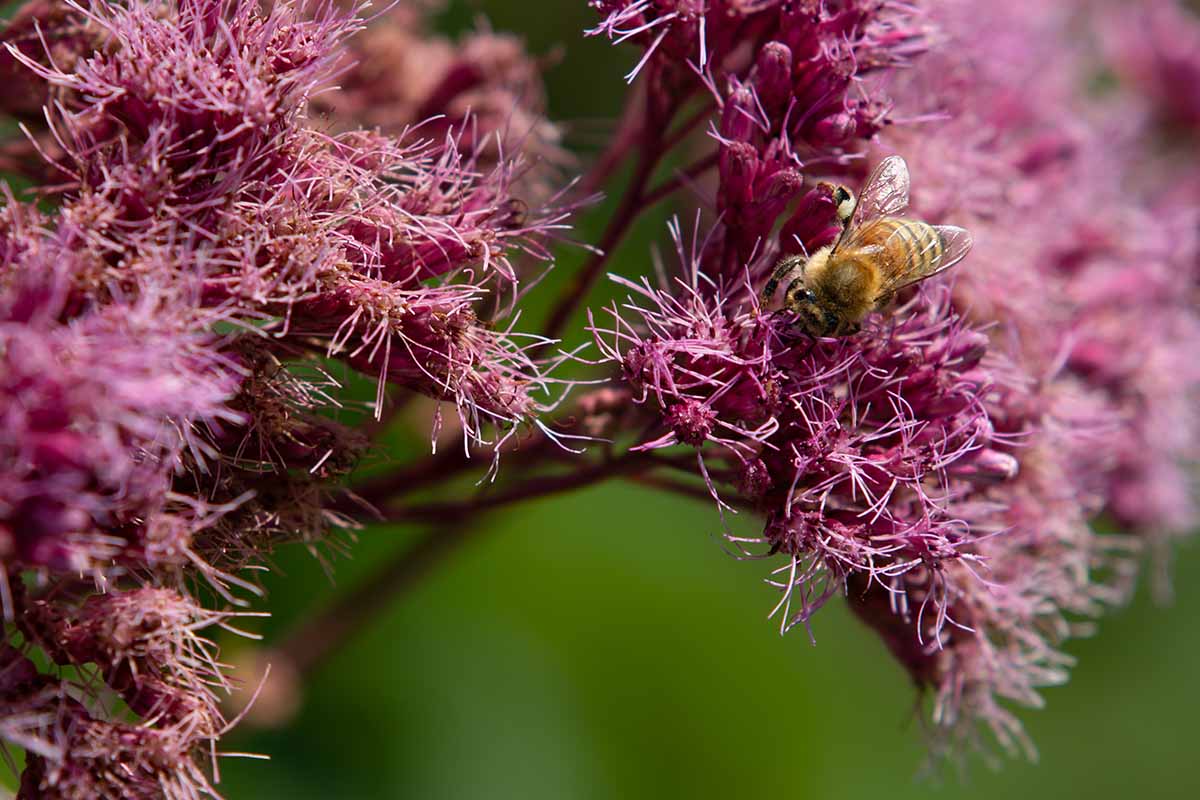
Commonly used in a decoction or tea, its roots and leaves were believed to help cure a multitude of ailments related to the urinary system including kidney and bladder stones, and even bed wetting.
Once lumped into the same genus of plants as the popular medicinal known as boneset, older accounts of joe-pye weed’s curative properties may actually have been describing the abilities of its close, and similar-looking, cousins.
Hardy in USDA Hardiness Zones 4 to 8, spotted joe-pye weed has gradually grown in popularity, transcending its reputation as a drive-by roadside wildflower.
Numerous popular cultivars exist today, making the plant even more adaptable and accessible to gardeners.
Spotted Joe-Pye Weed Propagation
To grow spotted joe-pye in your own garden you’ll need a moist to wet area situated in full sun.
Although it can grow in partial shade and freely draining soil, this native perennial will be more vigorous in optimally sunny, evenly moist conditions.
From Seed
The most cost-effective way to get this pollinator magnet blooming in your garden is to purchase – or better yet, collect from the wild – a handful of seeds.
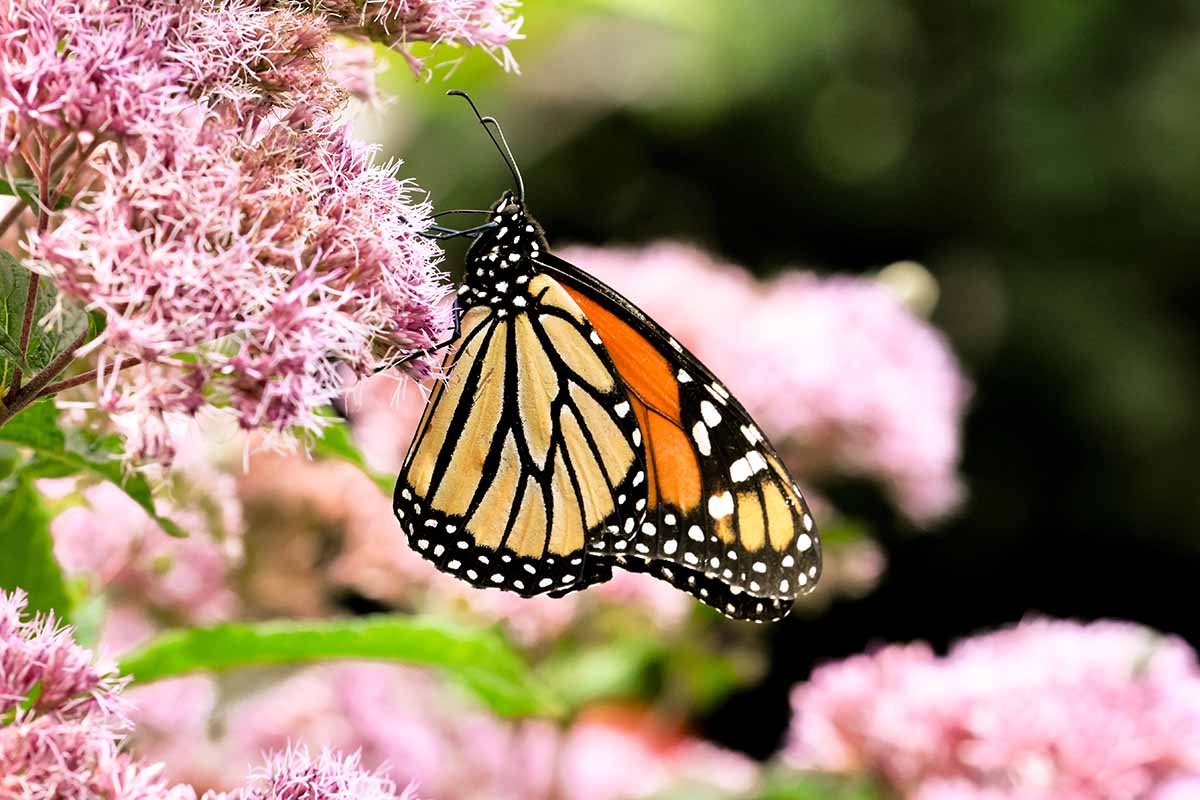
If you want to collect seed from wild plants, identify a population in late summer, when the pink flowers are easiest to spot. Assure that you have permission to do so, and do not gather seed or other plant parts from protected lands.
Collect the seed once the flowers have fluffed out and produced white “pappus,” the fluffy, parachute-like appendages that help these seeds to fly. This usually happens in October. Store the seeds in a paper envelope out of direct sunlight until you’re ready to sow.
You’ll have the most success germinating seed if you try to emulate what Mother Nature does: sow a few clusters of seeds on the surface of the soil in an appropriate spot in the garden before the first fall frost.
Push the seeds firmly into lightly raked soil but don’t cover them! These seeds need light to germinate.
The cold winter weather will stratify the seed and prepare it to transform come spring. You can read more about winter-sowing flower seed in our guide.
In spring, thin the seedlings by removing the weakest ones, letting the largest grow. Keep them watered well. Spotted joe-pye weed will typically reach flower-producing maturity in the second year of growth, but you might get lucky the first year.
Seed can also be started indoors in pots, but it must be cold stratified for 30 to 60 days in the fridge before sowing. To cold stratify artificially indoors, place seeds in moistened vermiculite or a damp paper towel inside a zip-top bag.
After stratification, fill two- to four-inch pots with potting soil. Press two to three seeds per pot into the potting soil six to eight weeks before the last frost date.
Keep the soil moist but not soaking until the seeds germinate. Make sure your pots get plenty of sun, at least six to eight hours each day.
Once the seedlings have at least two pairs of true leaves begin hardening them off after all danger of frost has passed.
Bring the seedlings outside in the daytime for short, one-hour increments and inside again at night.
After a week to 10 days, gradually increasing the number of hours outside each day, the seedlings will be accustomed to the outdoors, so you can get to transplanting!
From Cuttings
Spotted joe-pye weed can also be propagated using the growing tips of a mature plant’s new stems. Harvest this new, soft growth in late spring, making sure each piece is four to six inches long.
Remove the leaves from the bottom half of the stem to encourage the cutting to focus on root growth, and dip each stem in rooting hormone. Fill deep pots at least four inches tall with moist perlite. Bury the bottom inch or two of each cutting in the perlite and water well.
Tent the cuttings with a plastic bag and place in a location that gets plenty of sun, but where it won’t roast. The greenhouse effect of the plastic bag over the cuttings can amplify sunlight while retaining moisture, actually burning your tender cutting’s leaves.
Within about six weeks, your cuttings should begin to root. Give each cutting a couple extra weeks to establish a strong root system and then transplant out in the garden, following the instructions below.
From Transplants
The easiest way to establish spotted joe-pye weed is by purchasing a mature plant at a nursery.
Site your new addition, your homegrown seedlings, or your rooted cuttings in an area of the garden with plenty of space to prosper, and preferably somewhere they can keep their feet wet. These plants love moisture.
Make sure to dig the hole just deep enough so that the level of the soil of the root ball is even with the level of the soil in your garden. Water in really well!
How to Grow Spotted Joe-Pye Weed
Spotted joe-pye weed is a low-maintenance participant in the garden scene, but while it’s young it will require just a little TLC.
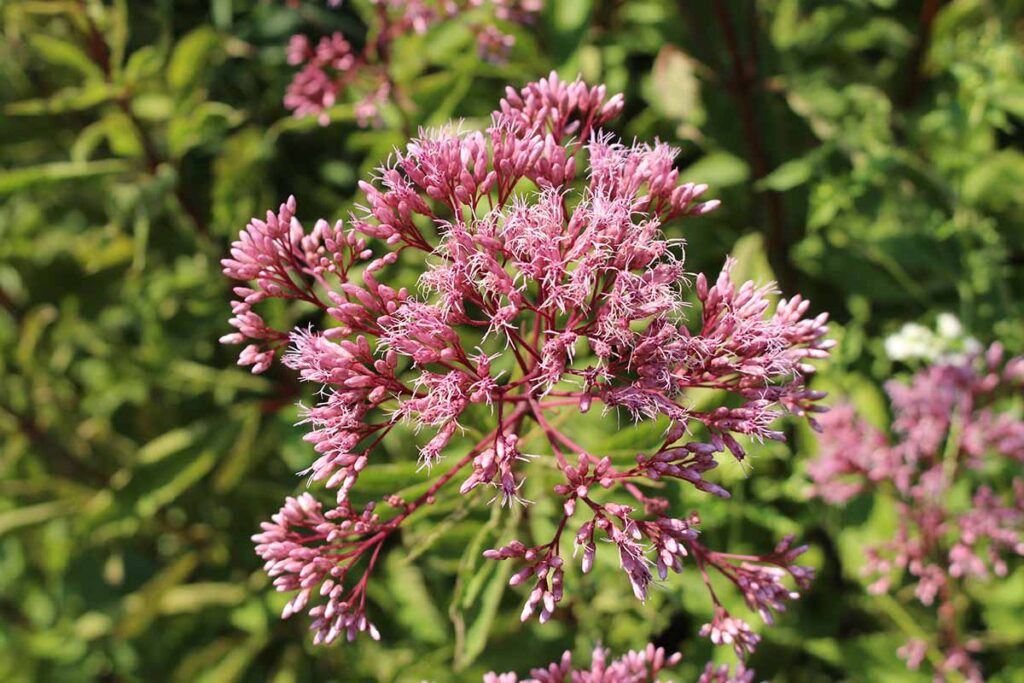
This stalwart isn’t too picky about soil type. It prefers a circum-neutral, consistently moist loam. However, any soil within a pH range of around 6.0 to 7.0 will do, so long as it’s watered well during dry spells and fed once in the spring if nutrient content in the soil is low.
Spotted joe-pye also has a preference for full sun but, easygoing as it is, will grow just fine in partial shade as well.
Remove weeds around the plant so they don’t compete for water and nutrients, and make sure the soil remains fairly moist while young plants or transplants are getting established.
Roadside ditches are a favorite contemporary habitat of this plant as they’re almost always reliably damp and sunny.
Maybe you have a dip in the garden where rain water pools? Or a leaky spigot where your hose connects to the house? This could be the perfect micro-habitat for your own stand of joe.
Growing Tips
- Plant in average to rich, moist to wet soils.
- Prefers a pH of 6.0 to 7.0.
- Provide at least three feet of space so mature plants can spread.
- Site in a location with full sun or partial shade.
- Water well during dry periods.
- Top dress with compost in spring if growing in poor soil.
Pruning and Maintenance
Requiring virtually no maintenance to thrive, spotted joe-pye weed can be left almost completely to its own devices.
Some gardeners choose to cut down browned stems and spent flower heads once the growing season is over, but the plant’s robust stems actually serve a purpose, providing cozy overwintering homes for insects if left standing.
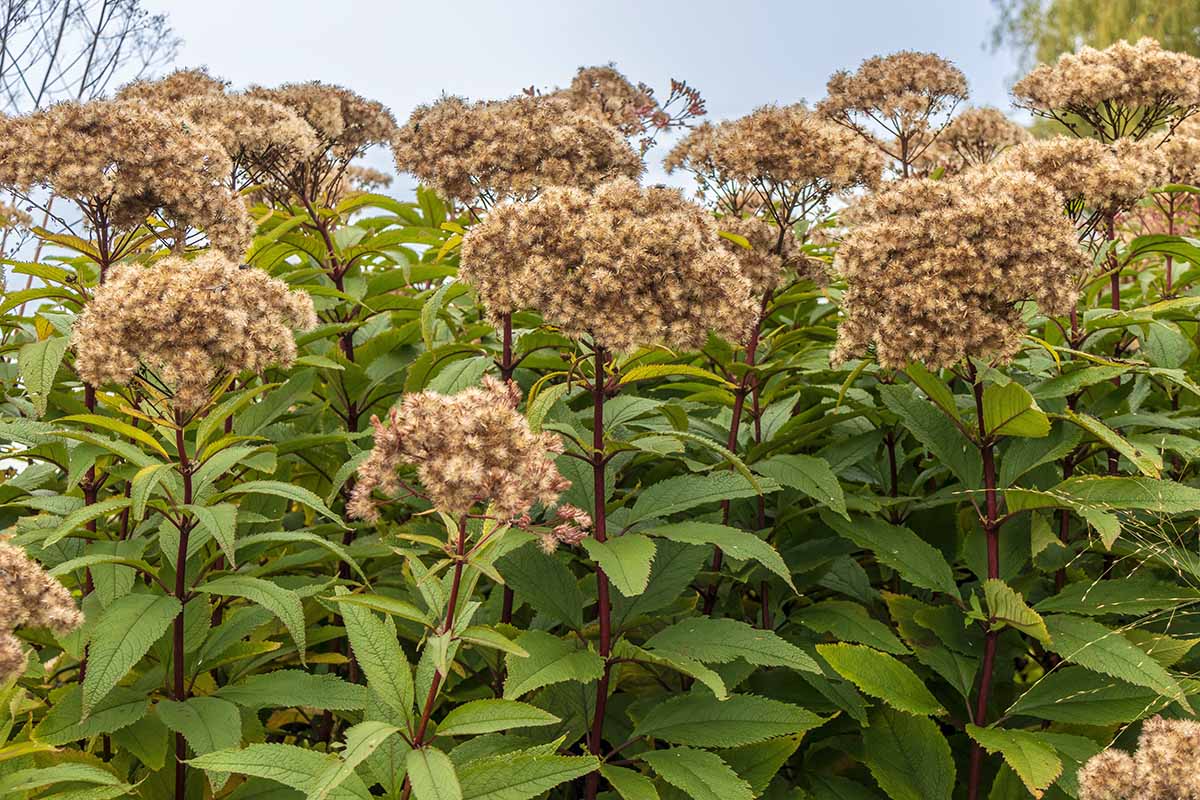
You can cut down old stems in late spring, or just let the wind blow them down and degrade naturally in the garden, providing even more beneficial critter habitat.
Spotted joe-pye will self-seed, so if you prefer just one titan towering over the garden, prune spent flower heads in mid-fall, or just weed out the seedlings in spring.
As with most garden plants, spotted joe-pye will benefit from a top dressing of compost in the spring, particularly if growing in nutrient-poor soil. If passing through a dry spell, make sure to water your plants well. This native always prefers a little extra moisture.
Spring is also the time to divide older plants. Use a sharp spade to slice through the middle of the clump, prying up half of the plant’s root ball.
These new divisions can then be planted throughout the garden so stems are level with the surface of the soil.
It’s best to plant divisions immediately so the underground rhizomes don’t dry out. Relocate the new clumps to places where they’ll have plenty of space to spread, water to drink, and sunlight to revel in.
Cultivars to Select
As native plants have gained a solid foothold in gardens across the country, so has the number of cultivars available increased.
Be careful when selecting cultivars to eschew those that are billed as pollenless or low on nectar. These traits can escape into wild populations and affect the pollinators that depend on wild plants for food.
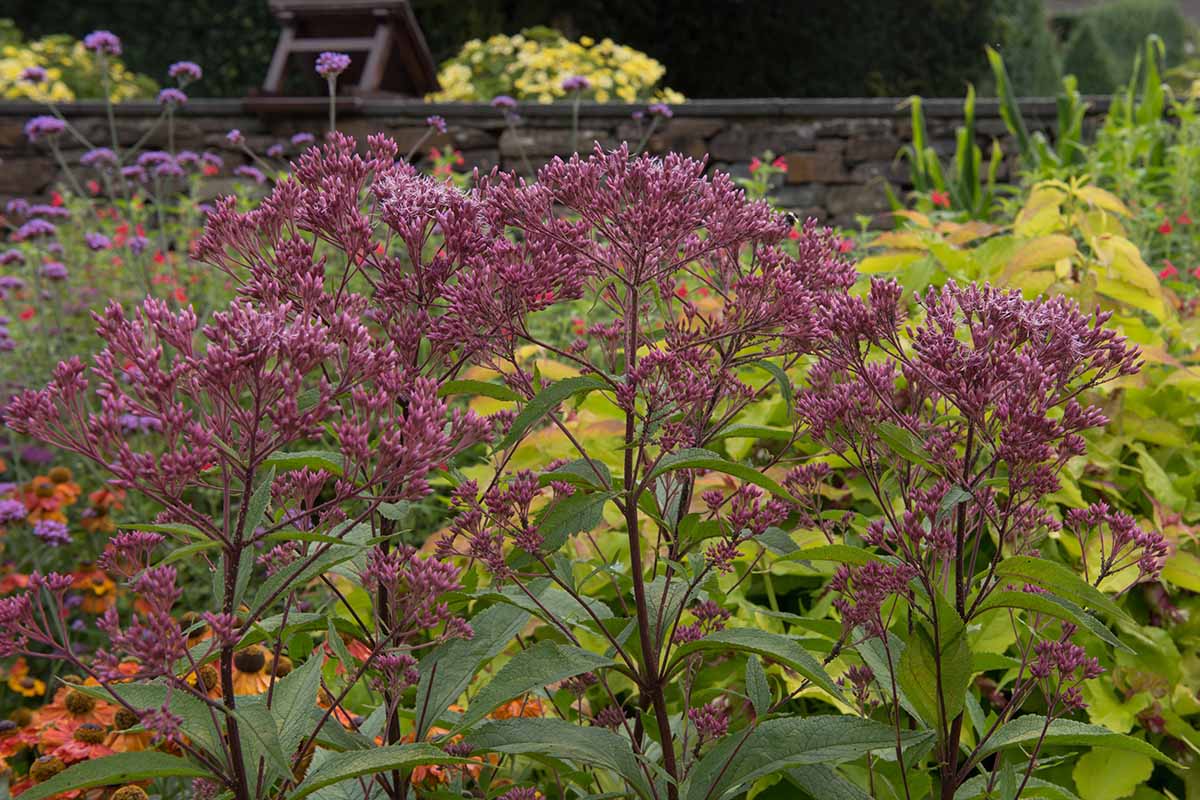
‘Purple Bush’ produces purple flowers in a looser inflorescence, and reaches a maximum height of approximately five feet.
‘Gateway’ is taller, around six feet in height, and sports dense, upright clusters of pink flowers.
‘Reisenschirm’ produces densely packed pink-purple blossoms.
Managing Pests and Disease
As is common with many native species, spotted joe-pye weed is plagued by very few notable diseases, and even fewer pests bother it.
Herbivores
Thanks to the bitter compounds present in spotted joe-pye weed’s leaves, herbivores generally choose to chew on something else.
Insects
While plenty of insects rely on spotted joe-pye weed, from its flowers to its leaves to its purple-spotted stems, few bugs, if any, do damage that need concern a gardener.
Disease
Resilient and vigorous, this plant is generally disease free, especially when grown in optimal conditions.
Powdery Mildew
This common fungus typically crops up during dry spells, when plants are stressed.
Often seen on plants situated in shady areas, it proliferates in areas of poor air circulation and appears initially as white spots on young leaves.
If you’re eagle-eyed enough to notice the infection in its infancy, pull off the affected leaves and destroy them by burning or tossing in the garbage – composting won’t destroy the spores.
If your plants are growing in the shade, consider moving them to better conditions in full sun in the fall, and watering more diligently to avoid drought stress. Water the soil around plants, not the leaves, as wet foliage will only help spread the fungus.
In healthy plants, powdery mildew shouldn’t impact bloom production or seed set too much.
If you’re concerned, spraying neem oil or another fungicide can be effective in killing the fungus and preventing another outbreak.
Read our guide to discover more options for treating powdery mildew in the garden.
Best Uses for Spotted Joe-Pye Weed
Undoubtedly, spotted joe-pye weed’s best use is in the wildlife garden where it may be allowed to grow rampantly, attracting hordes of beautiful winged things.

Statuesque and sturdy, this wildflower is a cinch to grow and its diaphanous pink flower heads look gorgeous adorned with striped bees, sparkling beetles, and painted butterflies of every color.
The cut flowers can be used in large arrangements to great effect, too, although they require a tall and non-tippy vase.
Quick Reference Growing Guide
| Plant Type: | Perennial wildflower | Flower / Foliage Color: | Pink to purple/dark green |
| Native to: | Eastern North America | Maintenance: | Low |
| Hardiness (USDA Zone): | 4-8 | Tolerance: | Herbivores, clay soil, wet soil |
| Bloom Time: | Late summer-early fall | Soil Type: | Rich, moist loam |
| Exposure: | Full sun to partial shade | Soil pH: | 6.0-7.5 |
| Time to Maturity: | 1-2 years | Soil Drainage: | Moderate to moist |
| Spacing: | 3-4 feet | Attracts: | Bees, beetles, birds, butterflies, hummingbirds, wasps |
| Planting Depth: | Soil surface (seed), top of root ball even with ground (transplants) | Uses: | Back of borders, wildlife garden, rain garden, cut flower |
| Height: | 4-7 feet | Order: | Asterales |
| Spread: | 3-4 feet | Family: | Asteraceae |
| Water Needs: | Moderate | Genus: | Eutrochium |
| Common Disease: | Powdery mildew | Species: | Maculatum |
Rock the Roadside Rockstar
This roadside standout is a star among late summer wildflowers, blooming when so many plants have petered out.
Tolerant of a wide range of soils, lenient when it comes to dry spells, and committed to soldiering on – even if you stuff it in the back border and forget about it – spotted joe-pye is truly the lazy gardener’s champion.
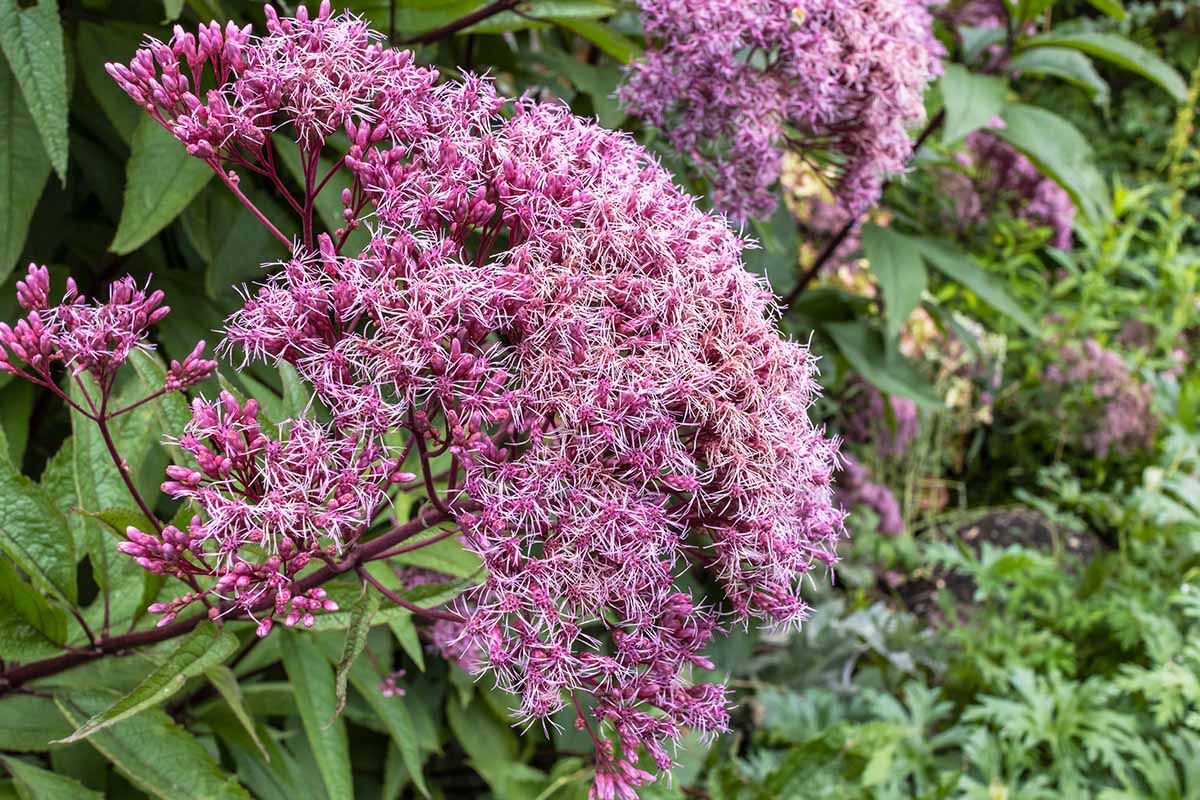
A surefire pollinator magnet, spotted joe-pye weed is the hero of the eco-friendly backyard, too. You can’t go wrong planting one of these and letting the insects come to feast.
Do you currently grow spotted joe-pye in your backyard? Tell us where it’s situated, and what beautiful insects you’ve seen using it. Comments are always welcome!
To learn more about native flowers to grow in your garden, check out the following guides next:
